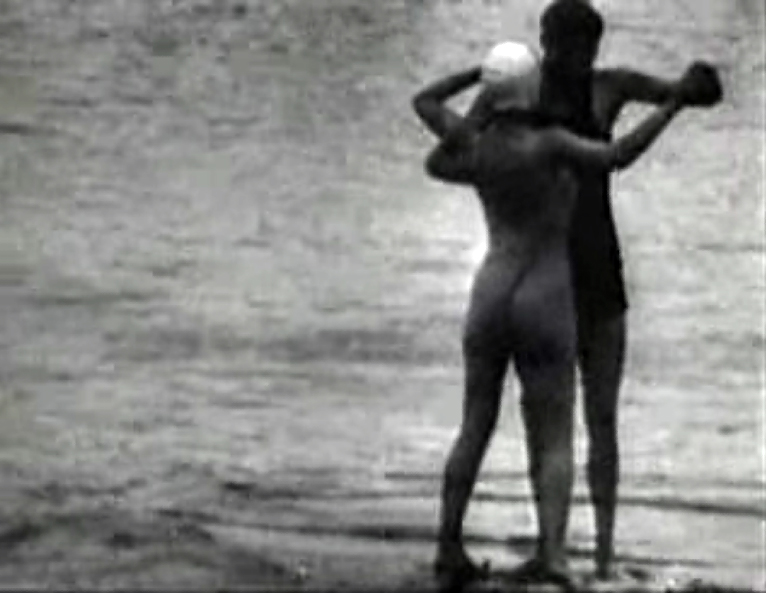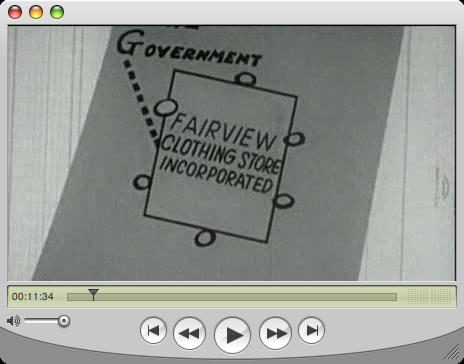When I was two we moved, briefly, to Dallas for a summer internship. We moved there for good the following year. All my memories from the time of the internship seem to happen at night. After being put to bed I would often lay awake for an hour or so. I had a pair of wind-up toy robots which I called Reddy and Bluey. As I lay there in bed Reddy and Bluey would start to walk across the room, along with other toys. I wasn't so bothered by the robots, since they were wind ups, but the Legos, that was a little strange. Eventually these nighttime hallucinations became more elaborate and began to inform my dreams thematically.

My bed was tucked into a corner of the room, touching the walls on the right side and at the foot. One night a group of monsters, or aliens as I thought of them, surrounded the bed and began to walk around it. The aliens had strange faces, all different, and were two dimensional (which makes me think the whole event may have been caused by cars driving around in the parking lot with their lights on), allowing them to slide smoothly between the bed and the wall. They were actually quite similar to the
urSkeks in
The Dark Crystal, but that film was released in 1982, and this happened in 1979. When the aliens appeared I was unable to move, but I did manage to call out to my parents in the next room, who's answer was something along the lines of "We'll worry about it in the morning." This particular hallucination set off a series of alien dreams quite similar to classic
abduction stories coupled with absurd dream logic. In them I was continually on the run, or being carried around by men in silvery suits and helmets with dark faceplates. I may have been in a ship in some of the dreams, but in the one I remember most vividly I was in an oneiric version of our apartment with an altered floor plan. I was sitting on my parent's bed in their relocated bedroom playing with my sock-monkey (I think his name was George). At some point the room became illuminated by a red light that had no obvious source, as though it came from the floor (I was fascinated by lava). One of the spacemen popped up from behind the bed, but apparently couldn't get me as long as I stayed in the center of the bed and didn't go near the edges. I continued playing with the sock-monkey, and during our game he misbehaved in some unspecified way. I punished him by throwing him off the bed, which broke the magic circle, and meant that the aliens could get him, and me. One jumped up on the bed and began to carry me off. I tried to call out, but couldn't speak. I have no idea what happened after that. I seem to remember being carried down the hall, perhaps onto the ship, or maybe I woke up.

Never did I imagine these were actual abductions, I took them for what they were, hallucinations and dreams. I had another batch of similar experiences when I was a teenager--sleep paralysis, autoscopic hallucinations, I even spent an entire night inside
Pavel Tchelitchew's Hide-and-Seek. Those experiences along with the "abductions," have formed part of my personal mythology, somewhat along the lines of
Joseph Beuys's personal mythology, I just don't give lectures on them or present them as facts.

The other day I had a chance to rethink these experiences thanks, in part, to the network structure of the internet, and something I would like to call "thinking online" (though "daydreaming" might be more appropriate). I was researching human-ape hybrids, of all things. I'm fascinated by hybrids, by the fluidity of genes, and their ability to cross our imposed boundaries of species, and even genus. For a short time I had a cat that was an F1
Bengal. Bengals are actually an inter-genus hybrid of the the
common house cat (
Felis catus) and the
Asian Leopard Cat (
Prionailurus bengalensis). Like most cat hybrids the first few generations of males tend to be sterile, and huge, as is the case with
ligers and
tigrons.
Six or seven million years ago the line of apes that was to become genus
Homo split off from the relatives of modern chimps (genus
Pan) and for 1.5 million years they were separate species. At that point the two groups
reunited and hybridized, the evidence being found on the X chromosome. This would seem to indicate that the hybridization resulted in fertile females and sterile males (as is the case with the aforementioned cat hybrids). In the 1920s Soviet scientist
Ilya Ivanovich Ivanov began a series of ethically dubious, and ultimately unsuccessful, experiments to create a
human-ape hybrid. One of the motivations behind such a hybrid is that the resulting creatures would be suitable for dirty, dangerous, and degrading work that "real" humans would like to avoid (umm, robots?). In my googling on the topic I came across a number of interesting stories, including that of
Kelpie Wilson, author of a
novel about a human-
bonobo hybrid. During the writing process she became so obsessed with the idea that she came close to procuring bonobo sperm and trying the experiment herself. I also stumbled across the image on the left on a white-supremacist website (which I refuse to link to). Taken in the 1930s, it is of a North-African man, called Bassou by the Berbers who lived nearby. Information on Bassou is nearly impossible to find, most of it on white supremacist websites of dubious origin and despicable intent. Apparently he lived alone, could not speak, and lived on fruits and insects. It is my opinion that he was simply a lonely, probably
microcephalous, human being. Not a hybrid, as alleged.

Many of my searches on poor, maligned Bassou did include the word "hybrid," which generated results including the alien-human hybrid theories of
Dr. David M. Jacobs. The fact that a professor of history at
Temple University would endanger his career on that sort of thing piqued my curiousity, naturally. Eventually that led me to the Wikipedia article on "
self-transforming machine elves." Machine elves are entities encountered by
Terence McKenna while tripping on
dimethyltriptamine, and in some ways are similar to the classic
grey aliens of
Roswell fame. Supposedly these machine elves create reality as we perceive it through their constant dance. About twenty percent of all people who take DMT as a drug (it is actually a naturally occurring substance in the human body, related chemically to seratonin and melatonin) experience hallucinations much like McKenna's, and nearly identical to the experiences had by alien abductees. Naturally occurring DMT has also been linked to such things as sleep paralysis and a feeling that one is not alone (when one in fact is). Those phenomena felt mighty familiar when I read about them. What amazes me now is not so much the experiences, which in a way are quite run-of-the-mill, but the fact that frivolous research on humazees could lead to a tenable explanation for one of the central mysteries of my childhood.









